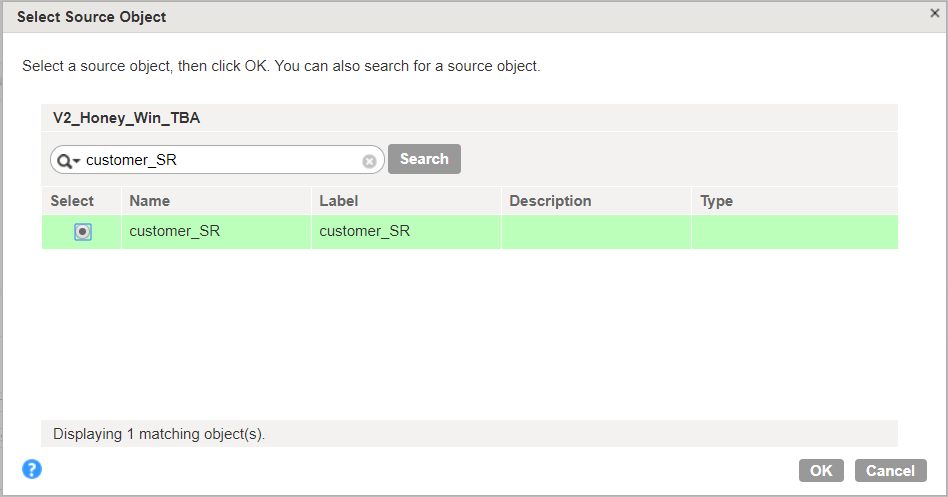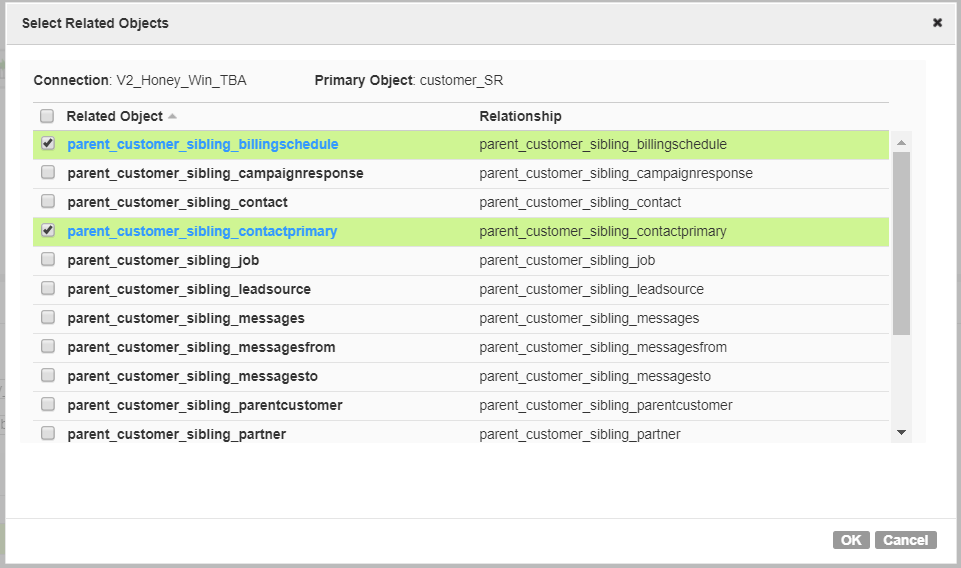NetSuite V2 Sources in Mappings
In a mapping, you can configure a Source transformation to represent a single NetSuite V2 source or multiple NetSuite V2 sources.
You can use multiple related NetSuite V2 standard objects as sources. You can select a standard object as the primary source. You can then add one or more sibling objects. NetSuite V2 Connector does not support the use of child and sibling objects at the same time.
The following table describes the NetSuite source properties that you can configure in a Source transformation:
Property | Description |
|---|
Connection | Name of the source connection. |
Source type | Select Single Object or Multiple Objects. Select Single Object to read data from a child object. Select Multiple Objects to read data from sibling objects. |
Object | Applicable for a single source. Select the source object. |
Add Source Object | Applicable for multiple sources. Select the primary object. |
Add Child Object | Not applicable for NetSuite V2 Connector. You can add a child object by selecting a single standard child object. |
Add Sibling Objects | Applicable for multiple sources. Select the desired sibling objects. |
Filter | Filters value in a read operation. You can add conditions to filter records and reduce the number of rows that the Secure Agent reads from the source. |
Sort | Not supported. |
The following table describes the NetSuite source advanced properties that you can configure in a Source transformation:
Advanced Property | Description |
|---|
Page Size | Page size used to get data from a source. Minimum value is 5. Maximum value is 1000. Default value is 100. |
Maximum Records to Read | Maximum number of records read from the source. For example, a value of 100 means that the Secure Agent reads 100 records from the source. The default value is 0, which means that the Secure Agent reads all records. |
Maximum number of concurrent threads | Number of concurrent threads. Specify the number of concurrent threads that you want to use. To optimize performance results with concurrent threads, your administrator might need to adjust the heap size. For example, a heap size of 512 MB for 10 threads might optimize performance results. Default value is 4. |
Tracing Level | Amount of detail that appears in the log for this transformation. You can choose terse, normal, verbose initialization, or verbose data. Default is normal. |
Configuring NetSuite V2 Sibling Objects
To read data from a NetSuite V2 sibling object, you must select the source type as Multiple Objects. You can add one or multiple siblings.
1. In the mapping, click the Source transformation, and then click the Source tab.
2. Select the NetSuite V2 connection that you want to use.
3. Select the Source Type as Multiple Objects.
4. In the Objects and Relationships section, click the arrow to open the Action menu and then select Add Source Object.
5. Search for the primary source object that you want to add. Enter the search phrase in the following format: <objectname>_SR
6. Select a source object from the list. Click OK.
7. In the Objects and Relationships section, click the arrow to open the Action menu corresponding to the primary source object and then select Add Sibling Objects.
8. Select one or more sibling objects from the list. Click OK.
9. Configure the other transformations in the mapping.
Configuring NetSuite V2 Child Objects
To read data from a NetSuite V2 child object, you must select the source type as Single Object and then select the child object from the list.
Note: You cannot use the Add Child button to add child objects.
1. In the mapping, click the Source transformation, and then click the Source tab.
2. Select the NetSuite V2 connection that you want to use.
3. Select the Source Type as Single Object.
4. Click Select.
The Select Source Object page appears.
5. Enter a search phrase and click Search to search for the child object.
You can use double quotes to search for objects whose names start with the search phrase. For instance, if you enter the search phrase as "employee", the Secure Agent lists all objects whose names start with the term employee.
You can differentiate between parent and child objects based on the naming convention that the objects use. Child objects use the following naming convention: <parentobjectname>_child_<childobjectname>
For instance, the customerpayment_child_paymentevent object selected in the following image is a child object and the customerpayment object listed in the previous row is a parent object.
6. Select the child object from the list and click Select.
7. Configure the other transformations in the mapping.
Retry Mechanism
When the Secure Agent tries to read data from a NetSuite V2 source object but does not receive a response, it tries to send the request again. The Secure Agent makes a maximum of 7 retry attempts to the NetSuite V2 object.
The retry delay is in exponential powers of 3. For example, the 6th retry takes place after 243 seconds from the 5th retry.







